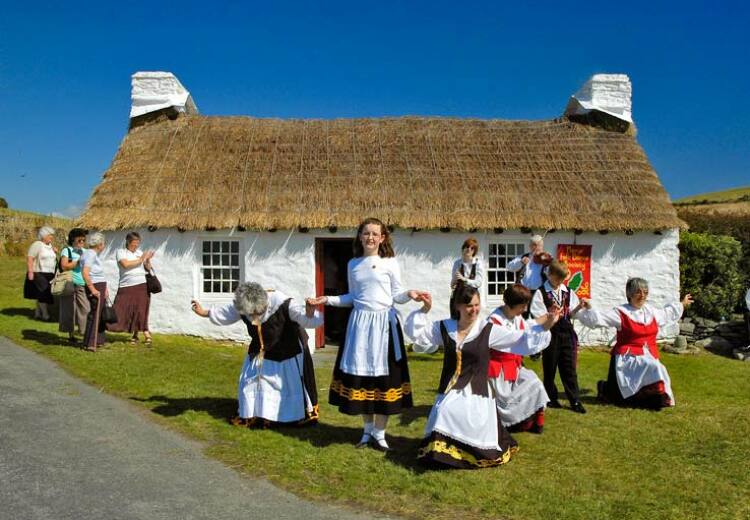The Island's schools are to gain energy and save money as a result of a joint initiative between the Department of Education and the Government’s Energy and Climate Change Officer Group (ECCOG).
An 'energy audit' carried out during the summer holidays by the Department of Education, utilising specialist firm Stroma, showed that draughty buildings were losing costly energy.
The most urgently-needed work has now been carried out to some buildings with further improvements scheduled for others.
The result will be less draughty buildings and lower fuel bills, Education Minister Anne Craine MHK revealed.
The Minister said, "Our schools vary considerably in age and condition and it is our responsibility to provide staff and students with a warm learning place and, at the same time, recognise that we need to be economical in our energy use.
"I very much welcome the challenge that the Department has taken, to see where we can improve on our energy loss and usage. Results show this has been a hugely successful exercise."
Peter Longworth, Energy Initiatives Officer with the Department of Local Government and the Environment, who is a member of the ECCOG, explained, "The Department of Education has 40 schools plus youth centres, the Isle of Man College and the University Centre.
"It was decided to carry out an energy audit of the majority of these buildings, so projects could be targeted where there was the most benefit."
Air pressure testing, during which ventilation sources such as doors, windows and vents were sealed while fans blew in air, showed where leaks were occurring through gaps and cracks in the fabric of school buildings.
"Efforts are now being made to improve schools’ energy ratings," Mr Longworth said.
"As an example, work on previously unidentified leaks at Cronk-y-Berry School, which is now 12 years old, has reduced the air leakage by more than 50 per cent - or 44 tonnes of Co2 per year.
"This in turn should reduce energy costs by a projected ?9,000 per year.
"The average home emits 6 tonnes of Co2 per year. Given that the total energy cost of the smallest secondary school is ?114,000, considerable savings can be made by looking at all the energy-saving opportunities there are."
As well as the air pressure testing, the Department of Education has also conducted energy performance reviews for the schools in question, looking at their fuel bills, calculating the size of the schools and determining how much energy was used proportionately.
"We expect there to be a large variation in how much energy schools use as some are older or less compact than others."
Report Reveals 'Energy Performance' Ratings
A report showing the energy performance ratings of properties tested has shown that Scoill Ree Gorree in Ramsey - the first Government building to be assessed according to BREEAM (Building Research Establishment Environmental Assessment Method) standards – is noticeably more energy efficient than older schools.
Its innovative construction method, which incorporated high levels of insulation and ground source heat pumps, means it produces 75 tonnes of Co2 a year, as opposed to 169 tonnes for a typical school of that size.
This has ensured a saving of ?6,000 a year compared with the adjacent Auldyn School and ?15,000 a year compared with a typical Island primary school of similar size.
Mr Longworth said, "Scoill Ree Gorree has set the standard for new buildings within the Isle of Man Government.
"It was more expensive to build than a typical building but when the Government has to pay to run these buildings for 100 years or more, setting high standards means better value for money and a better building in the long term.
"This is only the start of the process, to help us to determine which buildings to prioritise.
"Future steps could include adding cavity wall insulation in suitable buildings, installing special controls on air handling fans and lighting and involving schools more in managing their energy use."
The initiative has led to talks between the Department of Education’s schools advisers and the ECCOG over how best to promote awareness of energy-saving among pupils and teachers.
Mrs Craine said, "I very much look forward to being able to continue this work. Not only is the testing showing where we are losing heat but, by remedying that, we are able to keep our buildings draught-free and cheaper to run.
"The example of the newly built Scoill Ree Gorree, where the energy use is significantly lower than that of any other school, shows the benefits of long-term investment in alternative ‘green’ methods of heating and leads the way for future development.
"There are many more areas to look at and we all have a part to play in this praiseworthy initiative.
"However, the results so far are overwhelming and I am glad that our Department is at the forefront of addressing the problem of wasted energy."
Pictured: Lee Stoyles, Senior Technician with Stroma, conducting air pressure testing.








